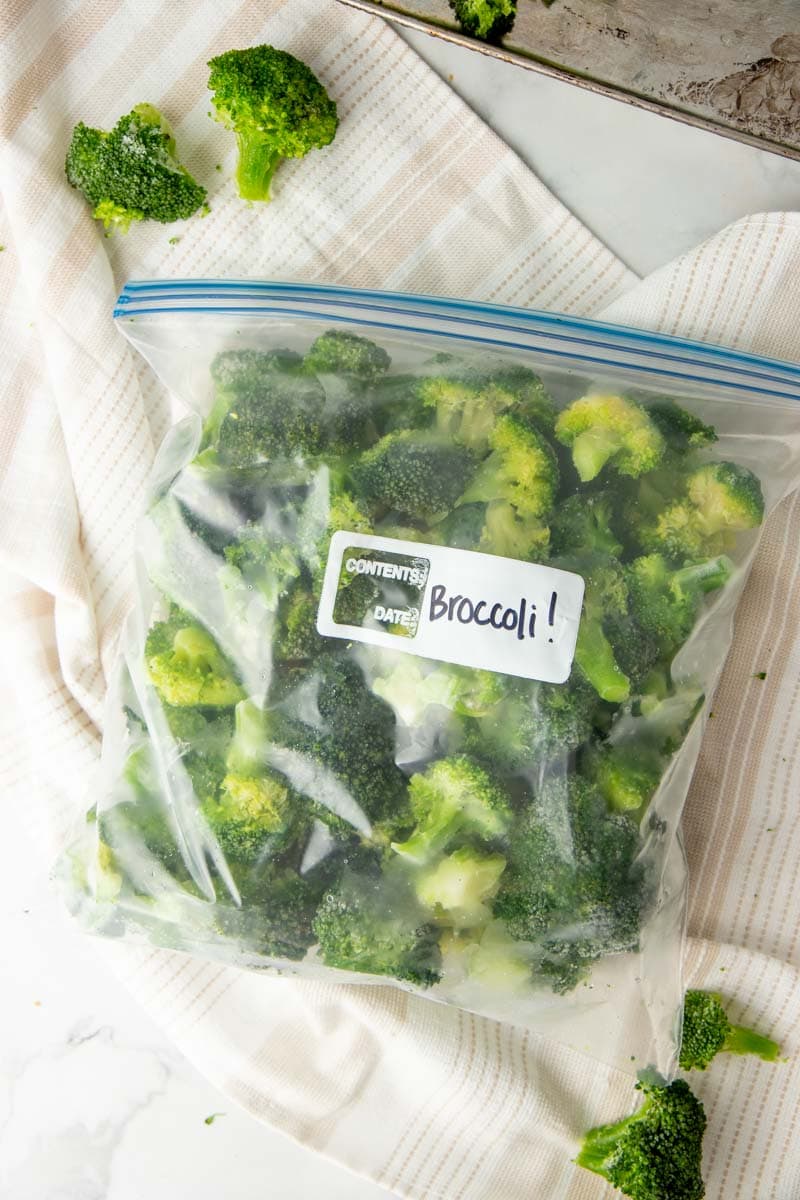As summer winds to a close, gardeners everywhere are left with an abundance of fresh produce that they want to preserve. While canning, dehydrating, and freezing are all great ways to preserve your harvest, only one of these works for broccoli.
Freezing broccoli is a fantastic way to lock in the juicy, flavorful taste of summer while keeping the vitamins and nutrients this green veggie is packed with. And don’t worry if you don’t know how to freeze broccoli—it’s super simple.
The key to freezing broccoli lies in the preparation. It isn’t difficult, but it’s important to know how to freeze fresh broccoli the right way. This prevents it from losing nutrients or becoming mushy and frostbitten.
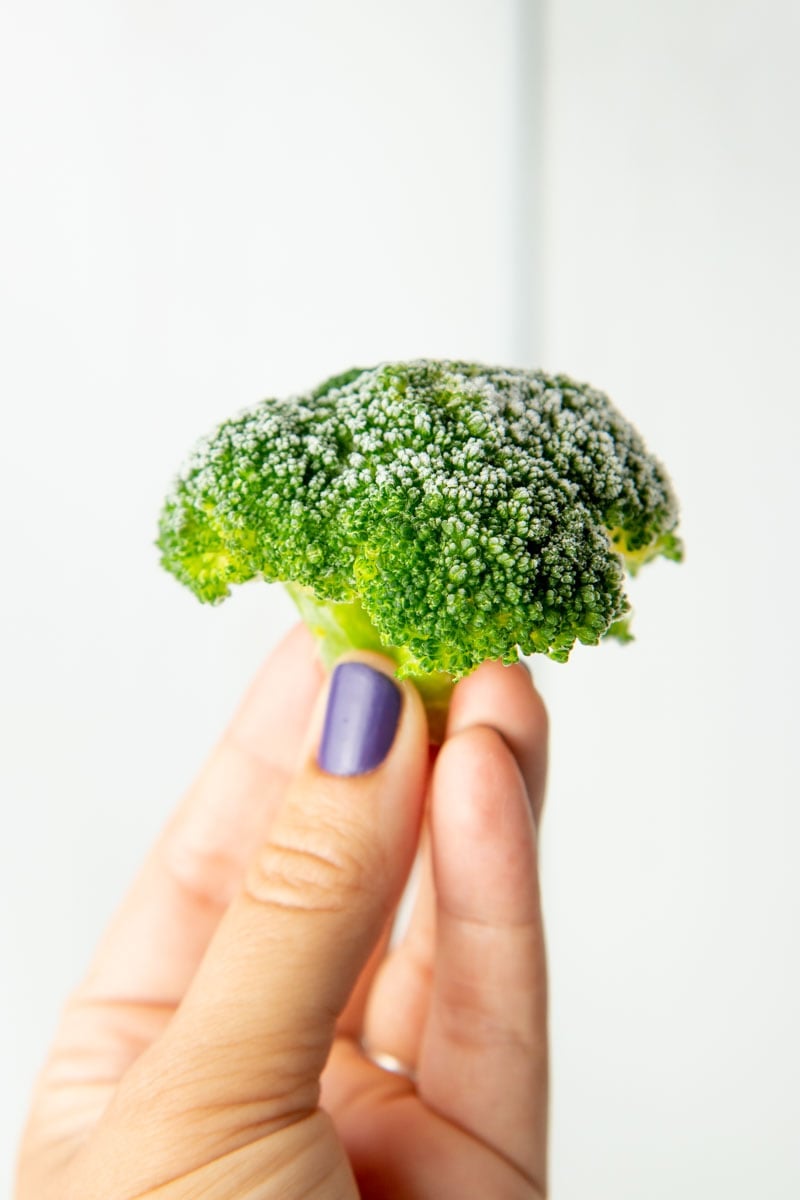
How do you prepare broccoli for freezing?
The first step is to give your broccoli heads a good wash. You want to remove any dirt that may be stuck in the florets by soaking them in cold water and swishing them around. Once your florets have been cleaned, you can remove any leaves and the woody bottom part of the stem. Break your florets into even pieces roughly two to three inches in diameter. Now we’re on to blanching!
Do you have to blanch broccoli before freezing?
Blanching is a way to help preserve the texture, flavor, and nutrients in vegetables before you freeze them. The purpose of blanching is to stop enzyme reactions that could break down the quality of your frozen vegetables.
You might be tempted to skip this step, but you shouldn’t. Blanching is essential to keeping the color, texture, and flavor of your frozen broccoli intact. If you skip blanching, you’ll be left with an unappetizing bunch of broccoli that’s pale, mushy, and tasteless when you go to use it.
It’s extremely easy to blanch veggies. All you do is submerge your vegetable in boiling water for a few minutes before moving them to a bath of ice water. The move to the cold water helps stop the cooking process, so you’re left with bright green and crisp frozen broccoli.
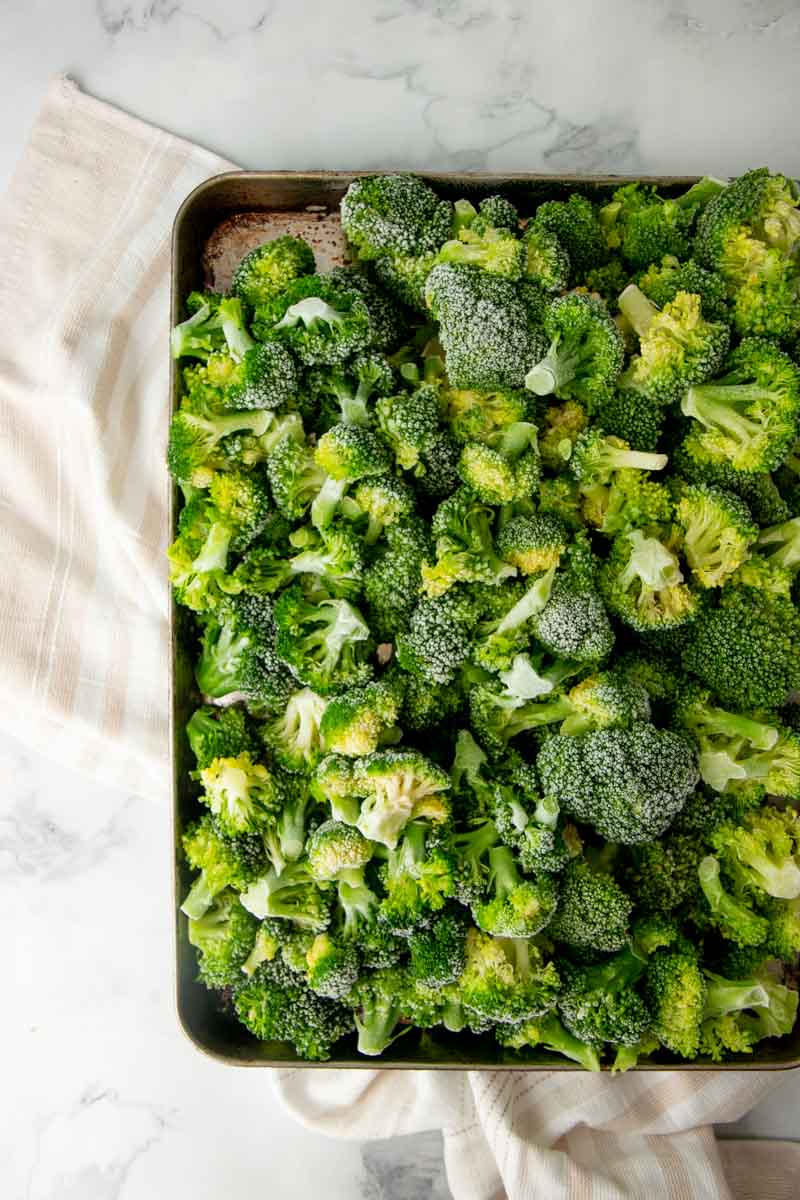
Alright, how do you blanch broccoli?
- Start by bringing a large pot of water to a rolling boil. While the water is boiling, prepare a large bowl by filling it with ice and water.
- Carefully drop broccoli pieces into the boiling water—watch out for splashing—and allow the water to return to a boil.
- Leave the broccoli in the boiling water for two to three minutes. It should look bright green at the end of the time.
- Scoop out the broccoli florets with a slotted spoon, and plunge the broccoli into the ice bath. You may need to add more cold water or ice as you go if the broccoli heats it up.
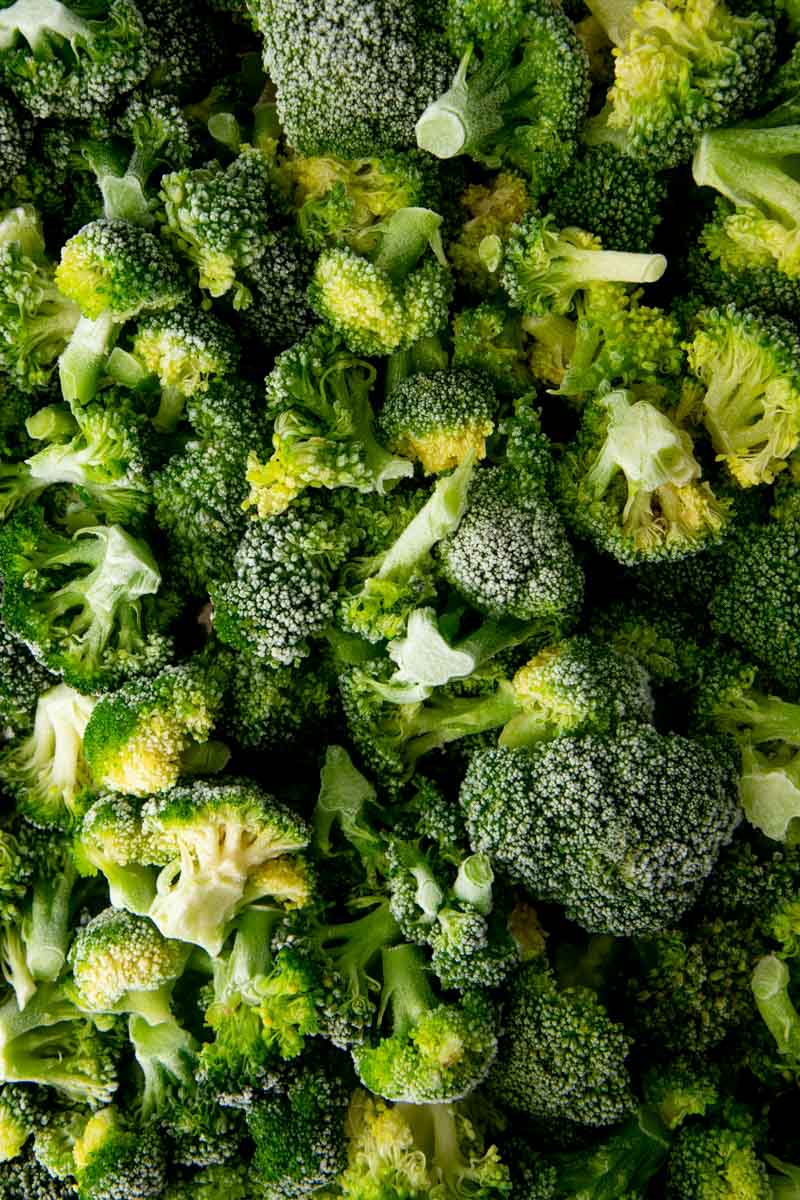
Okay, teach me how to freeze fresh broccoli!
Most of the steps have already been covered—learning how to freeze broccoli is that easy—but here are the steps in order, so you have them all in one place.
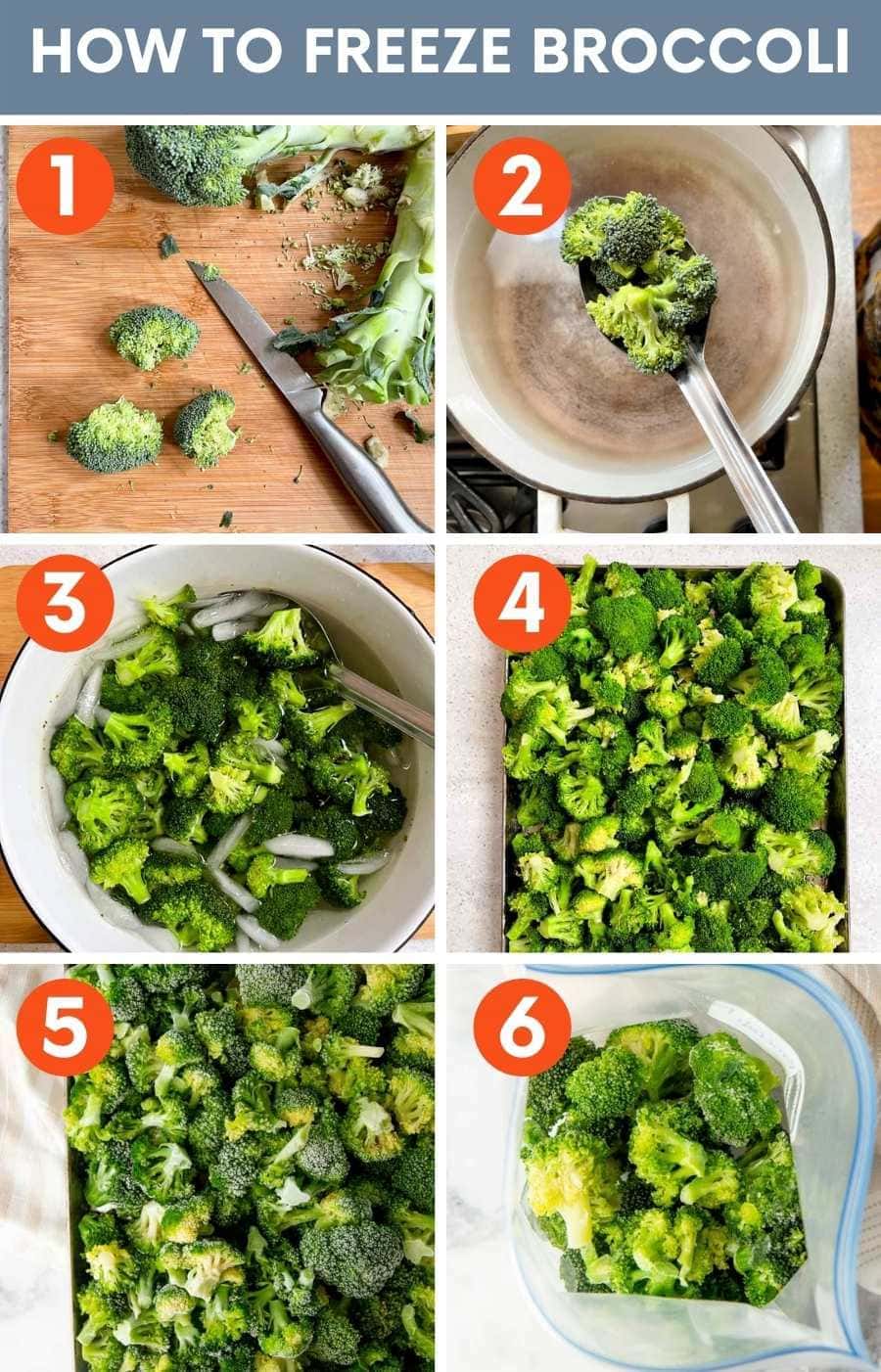
- Rinse your broccoli florets in cold water and remove the leaves and woody stems. Cut broccoli into florets that are equal in size and roughly two to three inches in diameter.
- Blanch the florets for two to three minutes in a pot of boiling water.
- Scoop the florets out of the boiling water, and then plunge them into ice water to stop cooking.
- Drain the broccoli, pat it dry, and spread the florets out in a single layer on a baking sheet.
- Freeze broccoli until solid. This will take 2-3 hours.
- Transfer the frozen florets to your containers of choice—more on that next—and freeze until use.
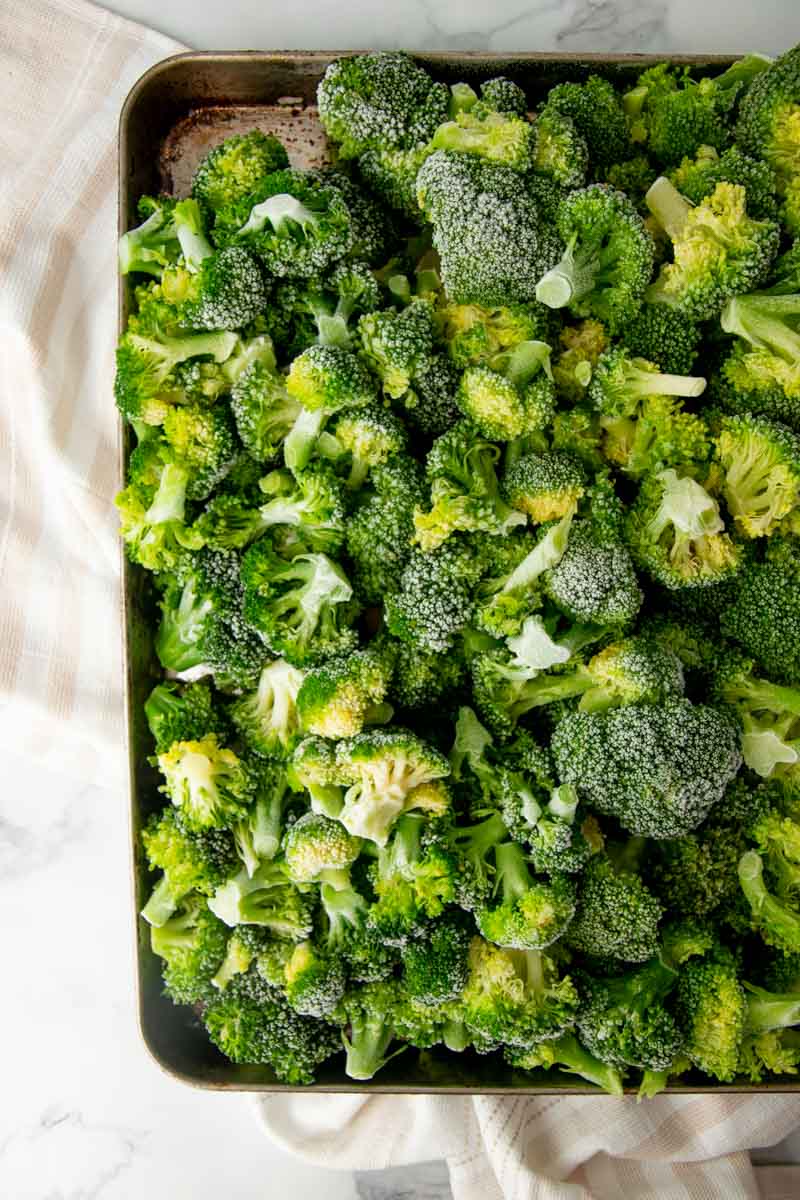
What containers should I use to freeze broccoli?
You have a variety of options when it comes to freezer containers. Some options work better if you’re short on space, while others are more environmentally-friendly. Here are some of our favorite containers for freezing broccoli:
- Glass Food Storage Containers—Glass food storage containers take up a lot of room, but they stack well. They have the added benefit of being transparent so you can quickly identify what’s in them. This option works best for large freezers with a lot of storage room.
- Glass Canning Jars—If you choose to use mason jars, make sure you get ones with straight sides, as they’re the safest for freezing. Mason jars take up a little less room than glass food storage containers, but they still require a fair bit of space.
- Zip-top Freezer Bags—If you’re short on space, then this is a good option. Freezer bags are inexpensive, and you can get them almost anywhere. The problem with them is that they can only be used once, and food won’t last as long as it would in a glass container.
- Vacuum Sealing Bags—This is the solution that will ensure your food lasts as long as possible in the freezer. Vacuum sealing bags also take up the least amount of room. The downside here is that you will have to purchase a vacuum sealer first. If you don’t plan on freezing very many veggies, one of the other solutions might be better suited for you.
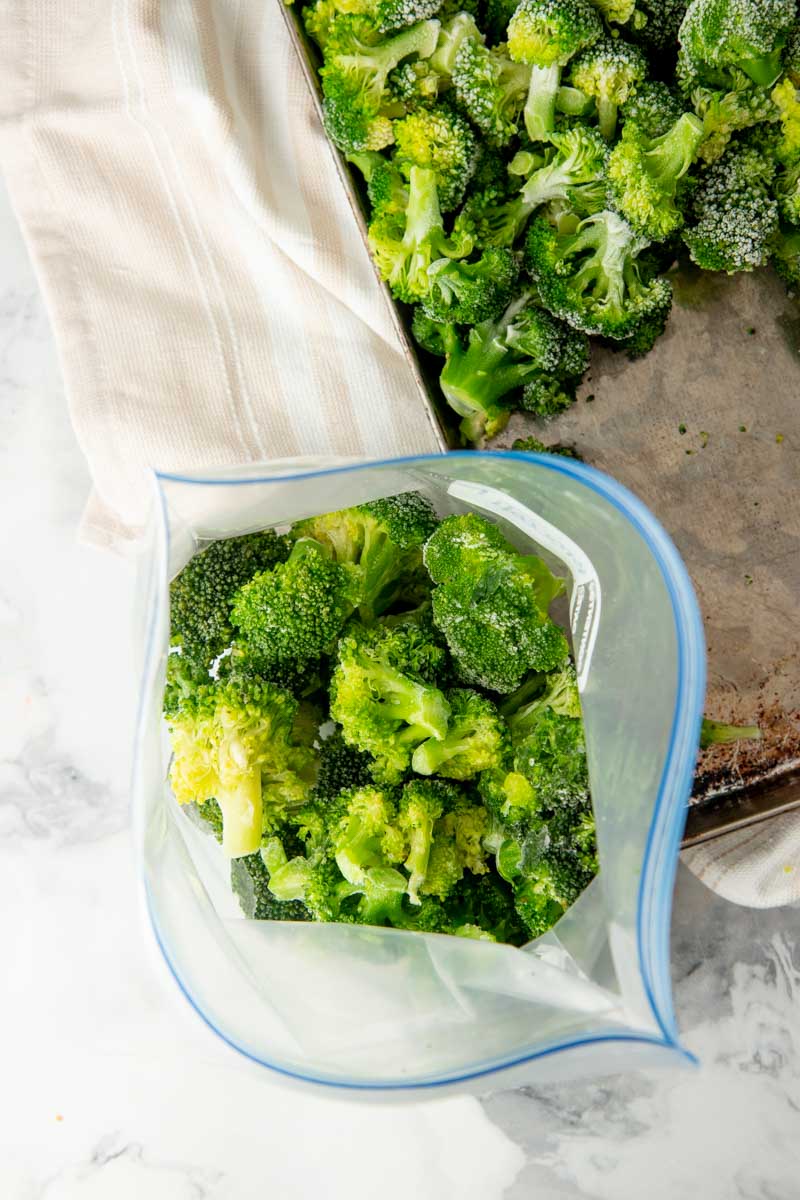
How long does frozen broccoli last?
If you blanch your broccoli first, it should last for at least six months in the freezer. How long it lasts will depend on which storage container you choose. Broccoli in freezer bags might only last three to four months, while vacuum sealed broccoli could last as long as a year! If you see any dry spots or discoloration, then your broccoli may be suffering from freezer burn. It’s still safe to eat, but the texture might be a little off.
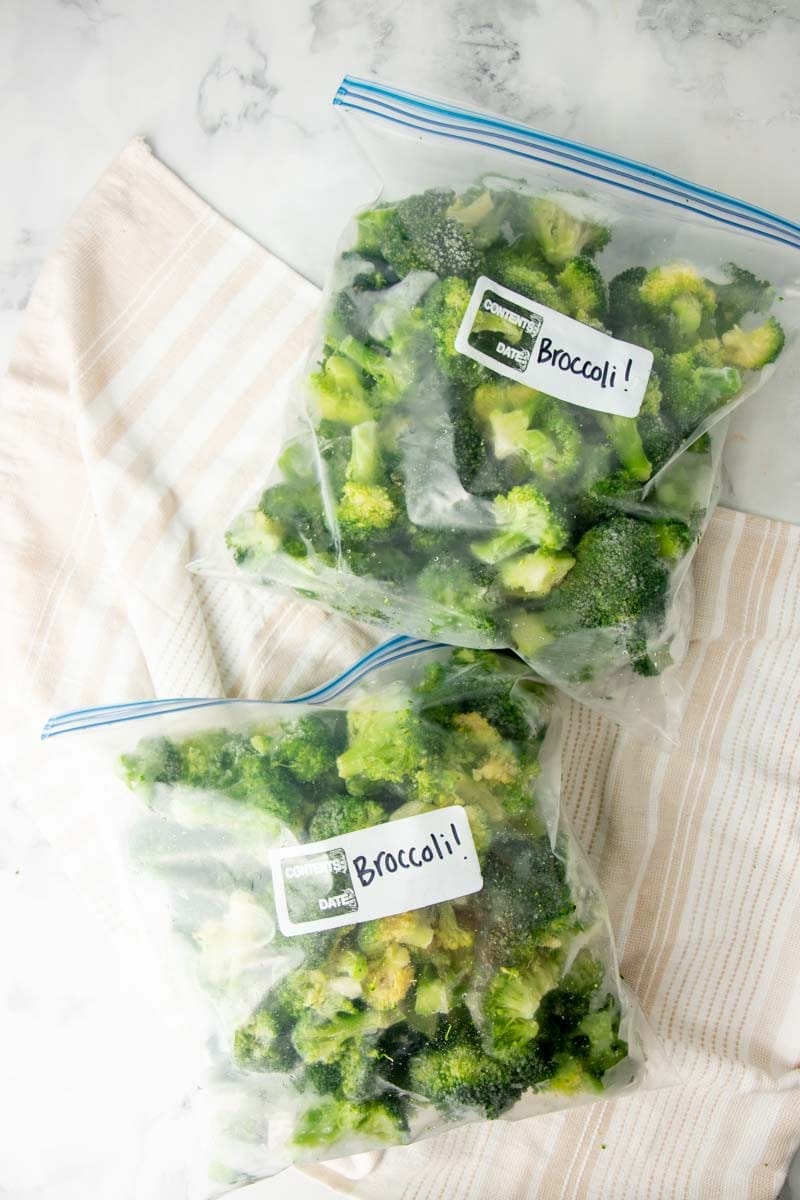
Tell me how to cook frozen broccoli!
Pretty much any recipe that requires fresh broccoli can be made with frozen broccoli. It works well in soups, stews, casseroles, and stir-fries, or as a yummy side dish. To avoid soggy broccoli, do not thaw it before cooking. You can roast it in the oven with some olive oil and spices, boil it in water, steam it in a steamer basket, or toss it in the microwave for three to four minutes. Remember that blanching partially cooks the broccoli ahead of time, so shorten the cooking time by a few minutes when cooking with frozen broccoli.
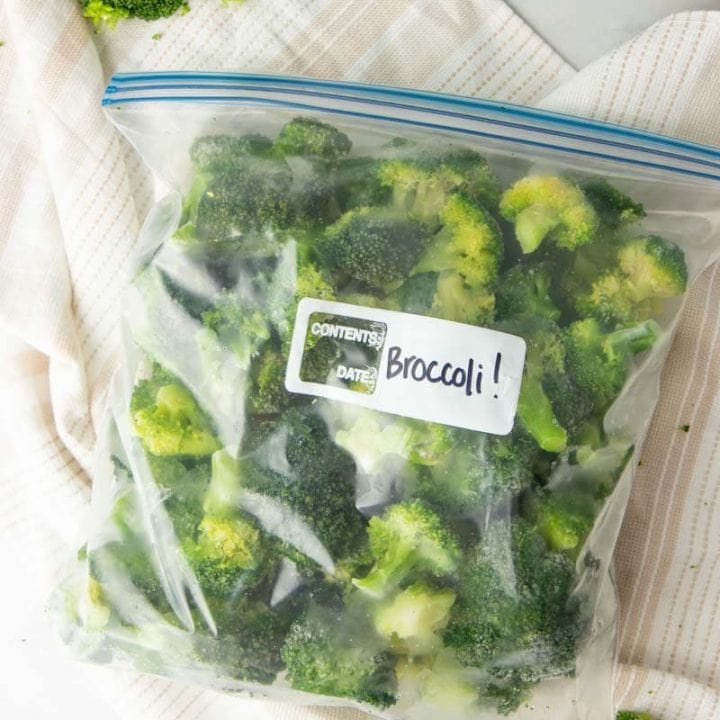
How To Freeze Broccoli
Freezing broccoli is a great way to keep it tasty for later use. Learn how to freeze broccoli quickly and easily here.
Ingredients
- 1 head of broccoli
- Water
- Ice
Instructions
- Bring a large pot of water to a boil. Fill a large bowl or sink with ice water.
- Wash and trim the broccoli. Cut into even pieces, 2-3" in diameter.
- Drop the broccoli into the hot water, return to a boil, and cook for 2-3 minutes.
- Use a slotted spoon to move the broccoli to the ice water to cool.
- Drain the broccoli, pat dry, and spread the pieces out in a single layer on a baking sheet. Freeze until solid.
- Transfer frozen broccoli to freezer bags or containers.
Nutrition Information:
Yield: 4 Serving Size: 1 cupAmount Per Serving: Calories: 32Total Fat: 0gSaturated Fat: 0gTrans Fat: 0gUnsaturated Fat: 0gCholesterol: 0mgSodium: 41mgCarbohydrates: 7gFiber: 3gSugar: 1gProtein: 2g
At Wholefully, we believe that good nutrition is about much more than just the numbers on the nutrition facts panel. Please use the above information as only a small part of what helps you decide what foods are nourishing for you.

